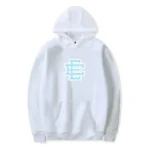In today’s digital age, the way we capture and share moments has undergone a significant transformation. One of the most fascinating developments in photography is the emergence of 360-degree photography, a revolutionary technique that allows viewers to explore a scene from every angle. This immersive form of photography has opened up new possibilities for storytelling, virtual exploration, and artistic expression. In this article, we’ll delve into the world of 360-degree photography, exploring its technology, applications, and impact on the way we perceive and interact with images.
The Technology Behind 360-Degree Photography
At the heart of 360-degree photography is specialized equipment capable of capturing a full panoramic view of a scene. Traditional cameras capture images in a single direction, but 360-degree cameras utilize multiple lenses or a fisheye lens to capture a complete spherical view. These cameras stitch together multiple images or video frames to create a seamless, immersive experience for the viewer.
Advancements in technology have made 360-degree cameras more accessible and user-friendly than ever before. From compact consumer models to high-end professional rigs, there is a wide range of options available to suit various needs and budgets. Some cameras even offer real-time stitching capabilities, allowing users to preview and share immersive content instantly.
Applications of 360-Degree Photography
The versatility of 360-degree photography opens up a myriad of applications across different industries:
1. Travel and Tourism:
360-degree photography allows travelers to preview destinations and attractions before visiting, offering a more immersive and informative experience than traditional photographs or videos. Tour operators, hotels, and tourist boards utilize this technology to showcase destinations and encourage tourism.
2. Real Estate:
In the real estate industry, 360-degree photography provides potential buyers with virtual tours of properties, allowing them to explore every room and corner from the comfort of their own homes. This immersive experience can help prospective buyers make more informed decisions and save time on property viewings.
3. Education and Training:
360-degree photography is increasingly being used in education and training programs to create immersive learning experiences. Students can explore historical sites, scientific phenomena, or cultural landmarks as if they were there in person, enhancing their understanding and retention of the subject matter.
4. Journalism and Documentary:
Journalists and documentarians utilize 360-degree photography to transport audiences to the heart of the story. By capturing immersive images and videos, they provide viewers with a deeper understanding of complex issues and events, fostering empathy and engagement.
5. Entertainment and Gaming:
In the entertainment industry, 360-degree photography is used to create immersive experiences in virtual reality (VR) and augmented reality (AR) applications. Viewers can step into the worlds of films, games, and interactive experiences, blurring the lines between reality and fiction.
Impact on Visual Storytelling
360-degree photography represents a paradigm shift in visual storytelling, allowing photographers and filmmakers to engage audiences in new and exciting ways. By giving viewers control over their perspective, it empowers them to explore and interact with the content actively. This participatory aspect fosters a deeper sense of immersion and connection, transcending the passive viewing experience of traditional media.
Moreover, 360-degree photography challenges conventional notions of composition and framing, encouraging artists to experiment with unconventional perspectives and techniques. The spherical nature of the images provides endless creative possibilities, from capturing sweeping landscapes to intimate moments in confined spaces.
Challenges and Considerations
While 360-degree photography offers many benefits, it also presents unique challenges for creators:
1. Technical Complexity:
Creating high-quality 360-degree content requires specialized equipment and technical expertise in stitching and post-processing. Moreover, managing large files and ensuring compatibility across different platforms can be daunting tasks for creators.
2. User Experience:
For viewers, navigating 360-degree content can sometimes be disorienting or overwhelming, especially if not implemented thoughtfully. Providing intuitive controls and guiding users through the experience is essential for creating a seamless and enjoyable viewing experience.
3. Bandwidth and Storage:
360-degree content, particularly in high resolution, can be data-intensive, requiring substantial bandwidth for streaming and storage. This poses challenges for both creators and consumers, especially in regions with limited internet access or mobile data restrictions.
Conclusion
360-degree photography has emerged as a powerful tool for capturing and sharing immersive experiences in today’s digital landscape. From travel and real estate to education and entertainment, its applications are diverse and far-reaching. As technology continues to evolve and become more accessible, we can expect to see even greater adoption of 360-degree photography across various industries.
Ultimately, 360-degree photography represents more than just a technological advancement; it signifies a shift towards more immersive and participatory forms of storytelling. By inviting viewers to step into the scene and explore it from every angle, it enriches our visual experiences and deepens our connection to the world around us. As we continue to push the boundaries of creativity and innovation, the future of 360-degree photography looks brighter than ever before.



































![Detailed Guide to Yamunotri: The First Dham [Complete Travel Guide] 34 Detailed Guide to Yamunotri: The First Dham [Complete Travel Guide]](https://guest-post.org/wp-content/uploads/2024/07/Char-Dham-150x150.png)









